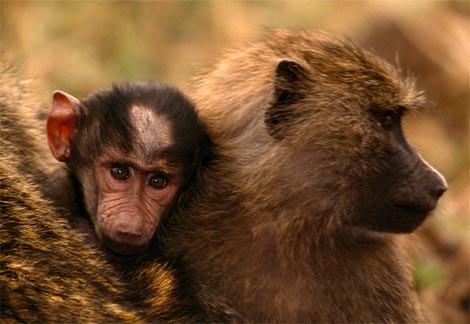

Click on the picture to see more!
Olive baboons live in equatorial Africa. They love habitats that are semi-desert, thorn scrub, savannah, woodland, gallery, and rain forest. The lifespan of these baboons is 30-45 years.
Baboons are omnivores. Grass makes up most of their diet along with berries, seeds, young leaves, fruits, tubers, and cereals. They also eat invertebrates, young birds, fish, and small mammals.
Olive baboons live in groups consisting of 15-150. Many are females with their young and few are males. Females are dominant in these groups. Males will try to bully other males for their dominance. Olive baboons are active and spend most of their time on the ground. During the night, they sleep on cliffs to avoid predators. If they are threatened, the males will strike while the females and young run for safety in the trees.
Female baboons give birth to one young after a six month gestation. The infant stays very close to its mother during the first month. By the time it's five to six weeks old, it can ride on its mother's back hanging on with all fours. A few months later the young baboon can ride sitting upright. Between four to six months, they begin spending most of their time with other young baboons.

